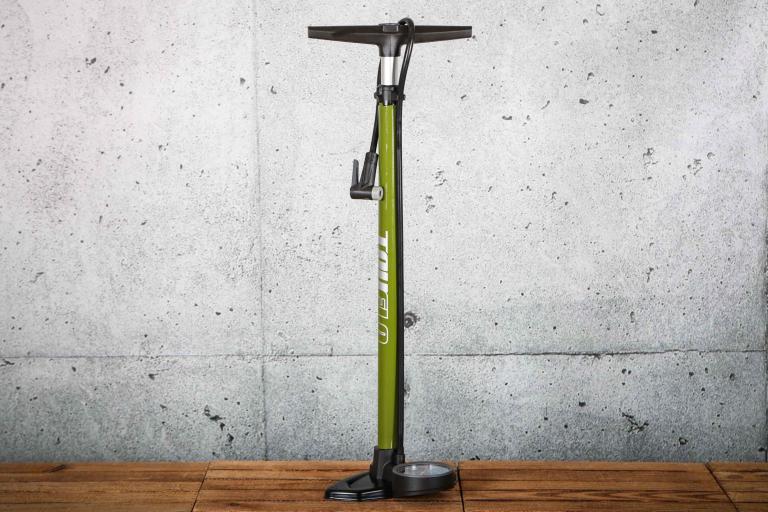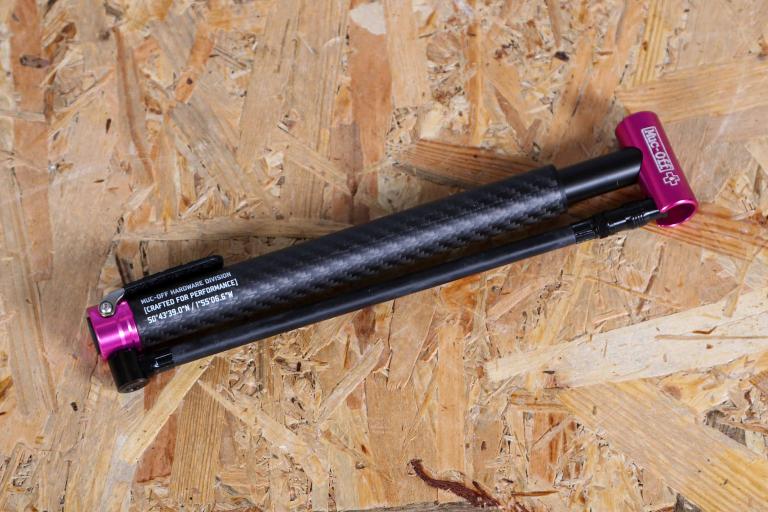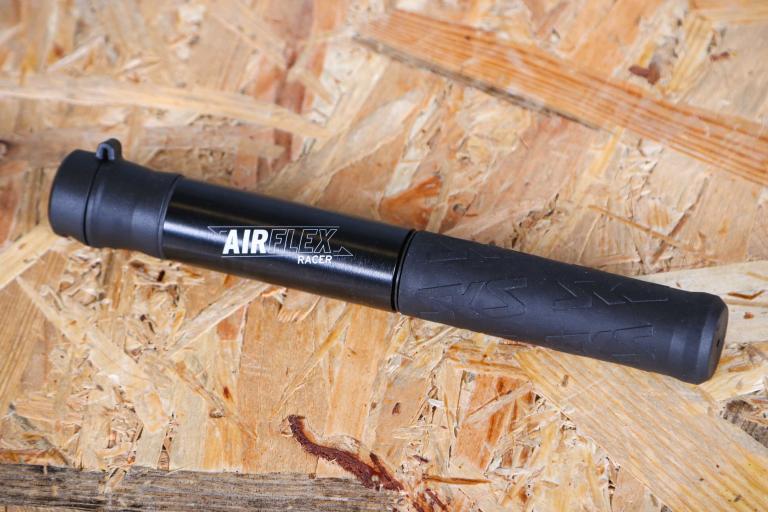- News
- Reviews
- Bikes
- Accessories
- Accessories - misc
- Computer mounts
- Bags
- Bar ends
- Bike bags & cases
- Bottle cages
- Bottles
- Cameras
- Car racks
- Child seats
- Computers
- Glasses
- GPS units
- Helmets
- Lights - front
- Lights - rear
- Lights - sets
- Locks
- Mirrors
- Mudguards
- Racks
- Pumps & CO2 inflators
- Puncture kits
- Reflectives
- Smart watches
- Stands and racks
- Trailers
- Clothing
- Components
- Bar tape & grips
- Bottom brackets
- Brake & gear cables
- Brake & STI levers
- Brake pads & spares
- Brakes
- Cassettes & freewheels
- Chains
- Chainsets & chainrings
- Derailleurs - front
- Derailleurs - rear
- Forks
- Gear levers & shifters
- Groupsets
- Handlebars & extensions
- Headsets
- Hubs
- Inner tubes
- Pedals
- Quick releases & skewers
- Saddles
- Seatposts
- Stems
- Wheels
- Tyres
- Health, fitness and nutrition
- Tools and workshop
- Miscellaneous
- Cross country mountain bikes
- Tubeless valves
- Buyers Guides
- Features
- Forum
- Recommends
- Podcast
review
£44.99
VERDICT:
Smooth, powerful mini track pump reaches high pressure with ease, although a gauge and longer hose would be good
Weight:
200g
Contact:
At road.cc every product is thoroughly tested for as long as it takes to get a proper insight into how well it works. Our reviewers are experienced cyclists that we trust to be objective. While we strive to ensure that opinions expressed are backed up by facts, reviews are by their nature an informed opinion, not a definitive verdict. We don't intentionally try to break anything (except locks) but we do try to look for weak points in any design. The overall score is not just an average of the other scores: it reflects both a product's function and value – with value determined by how a product compares with items of similar spec, quality, and price.
What the road.cc scores meanGood scores are more common than bad, because fortunately good products are more common than bad.
- Exceptional
- Excellent
- Very Good
- Good
- Quite good
- Average
- Not so good
- Poor
- Bad
- Appalling
Combining most of the portability of a pocket pump with the advantages of a track pump (some of them, at any rate), the Vel Air Flow TRV pump will get your tyres up to surprisingly high pressures with consummate ease at the roadside should the puncture fairy get you.
The mini track pump is not a new concept. The first to do a proper job of it was Lezyne, and its Micro Floor Drive is probably the best known example of this sort of pump. At 30cm long with a 21cm stroke, the Vel pump has almost identical dimensions to Lezyne's pump and is slightly lighter. It's nicely made from CNC'd and anodised aluminium with the fold-out foot made from really thick steel wire.
You could carry this pump in a jersey pocket, and I have done so on occasions, but most will probably either use the resin mounting bracket or chuck it in a bag. I favoured the latter as (as with the Lezyne pump) I found that the frame bracket allowed the ends of the pump to rattle against the downtube, which could cause paint damage fairly quickly so I abandoned the bracket on the first ride.
The anodised aluminium construction is well finished and overall it has the look of a good quality product. The piston slides very smoothly in the barrel meaning that all of your effort is going into putting air into the tyre. This - together with the large fold-out wire foot and the comfortable barrel - meant that reaching high pressures was impressively easy.
14 of the best cycling tyre pumps and CO2 inflators
I used a 25mm road tyre to compare the Vel pump with my Lezyne, and - as you might expect given their similar dimensions - they inflated at a similar rate, each reaching 90psi after 150 strokes. However, with the Lezyne I was disinclined to keep pumping much further as the handle is less comfortable and the higher friction meant it was much harder work. With the Vel pump, a further 100 strokes took the tyre to 140psi and while the pump was starting to get warm, it had more to give and I am confident that I could have reached the claimed maximum of 160psi. But really, who needs 160psi beside the road? Even noted road.cc tyre pressure masochist Stu Kerton doesn't go that high.
So far, so good for the Vel pump then. You'll notice in the pictures that the hose runs only one length of the barrel - it's about 25cm long. This sounds like quite a bit but it's less than half of what you get with the Lezyne pump which loops up and over the handle. What this means is that you need to spin the wheel such that the valve is pretty close to the bottom before you attach the Vel pump. I found on deep section rims that it was much easier to use the Lezyne with its longer hose.
Moreover, if you do have deeper rims and use valve extenders, this may not be your pump. The pump head uses a screw-on attachment with an o-ring to ensure a seal. I couldn't get the valve extender to fit through this o-ring enough for the thread to engage with a Presta valve. That head is reversible, incidentally, allowing use with Schrader valves too.
One thing which is missing from this pump is a pressure gauge. I like the reassurance of the little pen gauge in my Lezyne, as boredom and laziness otherwise inevitably result in me concluding "that's probably enough" at 50psi if I rely on the squeeze test. Most pocket pumps don't have gauges, but but both the Lezyne and the similar Unich pump we tested a couple of years ago do, so it's a shame that Vel couldn't squeeze one in.
All in all, the Air Flow TRV puts in a creditable performance and if achieving high pressures when away for home is a priority, this is perhaps as good as it gets. If it seems like I've mentioned a certain other pump rather a lot in this review, that's in part because it's such an obvious influence on the Vel pump, even down to the recessed rubber ring in the base of the pump to help grip on the ground while pumping.
The bottom line is that I found the Vel a nicer pump to use, especially at higher pressures, but it lost out in practical terms due to the shorter hose length, lack of pressure gauge and problems when used with valve extenders. Horses for courses.
List price is £45, which is comparable to the other pumps I've mentioned above. These are all towards the upper end of the market for this sort of pump and other brands such as Topeak have offerings at lower price points. Having used some of them, they are functional but certainly not as well made or nice to use as these more expensive options.
Verdict
Smooth, powerful mini track pump reaches high pressure with ease, although a gauge and longer hose would be good
road.cc test report
Make and model: Vel Air Flow TRV pump
Size tested: One
Tell us what the product is for
A mini track pump aims to offer the best of a track pump (ease of pumping, ability to reach higher pressures) with some of the portability of a pocket pump.
Tell us some more about the technical aspects of the product?
It's 30cm long and weighs a fairly pocket-friendly 200g. Comes with a frame mount that can attach under a bottle cage, but I mostly carry this sort of pump in a bag.
Claimed max pressure of 160psi is - for once - pretty plausible.
Rate the product for quality of construction:
10/10
Rate the product for performance:
9/10
Easy to hit high pressures, comfortable in the hand too. Loses a mark as I couldn't get it onto my valve extenders.
Rate the product for durability:
8/10
I'd expect the anodising to show signs of wear. I'd expect the o-ring seal inside the head to wear out over time, but at least you could just replace the screw-on head if it did.
Rate the product for weight (if applicable)
8/10
A little less than the Lezyne, but quite a chunk more than the Unich.
Rate the product for comfort (if applicable)
10/10
Rate the product for value:
7/10
Reasonably expensive for a roadside pump, but certainly nicer to use than cheaper alternatives.
Tell us how the product performed overall when used for its designed purpose
Very well - I can't think of another portable pump that could hit high pressures as easily as this.
Tell us what you particularly liked about the product
Comfortable handle, smooth action, really easy to get up to pressure.
Tell us what you particularly disliked about the product
Lack of gauge, short hose, incompatibility with my valve extenders.
Did you enjoy using the product? Yes
Would you consider buying the product? Yes
Would you recommend the product to a friend? Yes
Use this box to explain your overall score
It's a very nice pump to use and I found it notably more efficient at reaching high pressures than alternatives. I'd maybe give it a full 5 stars if I could fit it to all my bikes and if it had a pressure gauge onboard.
About the tester
Age: 37
I usually ride: On-one Bish Bash Bosh My best bike is: Rose X-Lite CRS
I've been riding for: Over 20 years I ride: Most days I would class myself as: Expert
I regularly do the following types of riding: road racing, time trialling, cyclo cross, commuting, touring, club rides, sportives, general fitness riding, fixed/singlespeed, mtb,
Jez spends his days making robots that drive cars but is happiest when on two wheels. His roots are in mountain biking but he spends more time nowadays on the road, occasionally racing but more often just riding.
Latest Comments
- brooksby 1 hour 29 min ago
"Transit"?!? Trump probably thinks that is just some sort of communist thing, only for losers
- David9694 1 hour 36 min ago
Further to A Look at Logical Fallacies a couple of months ago. My theory is that 5...
- wtjs 1 hour 52 min ago
A dangerous, reckless and aggressive BMW driver. Who saw that coming?!
- wtjs 1 hour 57 min ago
canny Lancashire drivers have saved some cash by not bothering with paying VED or getting a MOT? This is VW Passat KP58 GGA
- stonojnr 1 hour 58 min ago
its aggressive because its basically a left hook onto a roundabout. The driver is basically giving you the choice move out their way or be hit,...
- David9694 2 hours 37 min ago
(Driverless) Essex crash sees person trapped as car flips on side https://www.gazette-news.co.uk/news/24927107.canvey-island-car-flipping-...
- HoarseMann 3 hours 26 min ago
Well, I've watched the video and I didn't see anyone in it who would likely to be offended....
- giff77 4 hours 22 min ago
Councils aren't responsible for the roads in Northern Ireland. This remit falls in the hands of The Department for Infrastructure who answer to a...
- OldRidgeback 6 hours 1 min ago
What a disgusting comment. Perhaps he should have to meet with the families of some victims of poor driving.











Add new comment
14 comments
fucks sakes, some of you are pathetic, when you've pumped up your tyres plenty of times and also made a note of how many strokes it takes to pump any particular tyre up to x pressure then you have a good idea what pressure you're going to have within 10-15%.
That's good enough to get you back home, if it feels spongy when you get back on the bike you'll know pretty quickly.
Maybe you idiots should learn something before gobbing off like children!
Calm down man, it's the internet you know
I've pumped up thousands of tyres of sizes from 19mm up to 3"+, on rims ranging from matchstick-thin to bathtub-wide. Tubed and tubeless, slick and knobbly. I have often done so at the roadside after flatting, thinking I could tell what 65PSI or whatever felt like. On returning home, I'd always be way off either way. No, I don't 'count strokes' as life is way too short to memorise stuff like thatm, and anyway it would change based on ambient air temperature, speed of pumping etc. I've reviewed many pumps and had to count exactly how many needed to get to x/y/z pressures, including proper notes. There's often considerable variation, especially when approaching maximums.
A 38mm tyre at 35PSI feels about as hard as a 28mm tyre at 65PSI, going off a thumb test I just did (Disclaimer: No thumb calibration was performed). There's ScienceTM behind this. Just as I can't be arsed remembering exactly how many strokes are required for one bike, owning and regularly riding half a dozen bikes of varying tyre widths makes this a nonsense.
Personally I don't want 'good enough to get me back home' - like I said (and which you've ignored), what if you flat 5k into an audax? You may be willing to suffer under-or over-inflation for the following 195km, personally I'd prefer the physical and mental certainty that it was dialled. For that, you need a gauge. If you don't want one, that's up to you, but you don't need to be calling others 'pathetic', 'idiots' or 'children' for wanting certainty/accuracy.
Isn't a free market great?
Road pump? Only going to be used for running repairs. Needs to be simple, light and that is about all. If you are racing when you need it then you are already out of the race. All else, well you know by feel how much air you need to get you to wherever you are going.
Pump for workshop needs an accurate pressure gauge. This is apparently neither, I'm not really sure what purpose it would serve.
For a roadside pump you'll rarely be using a guage so is totally superfluous. If you don't know by the feel how much is sufficient just so that you can complete your ride then you'll be having other problems elsewhere too. Once you get home, pop on your track pump or use a pressure guage and if it's not enough then add more.
I bet many people don't even check their pressures for weeks at a time so will be riding underinflated for the most part anyways.
I'm still using a Specialized airtool 'MTB' for all my journeys including the carbon racer, it has a much bigger volume than most so doesn't need as many strokes and fits easily in either a back pocket or on the specific bottle cage hole mount and is very secure. doesn't require popeye arms to get 75PSi in a 32mm tyre either.
Nope. Just like your 'I've got magic fingers so I don't need a torque wrench' comment a few weeks back, once again you're off the mark there BTBS. Having a gauge on the road is both useful and performance-aiding. The difference in 5PSI either way from optimal could be a lot of lost or gained efficiency or comfort over a long ride. If you flat 5km, 50 or 150km into a 200k ride, of course you want to be confident your pressure is dialled. And no, you cannot tell accurately by use of thumb. No. Nope. No way. Temperature, wet or dry, fatigue - all would affect you even if you could spot a 10PSI difference.
I've been using a Birzman Apogee with inline gauge for two-plus years now, and it's genius.
I don't have magic pressure-sensing fingers, neither does anyone else.
Have you taken into account the extra drag created by the gauge ?
#MarginalBullshit
I've just checked with my lady and apparently I do.
You can determine tyre pressures by touch? You are Lieutenant Commander Data and I claim my prize!

I don’t understand why you’d buy a pump which didn’t have a pressure gauge...
Still less why it was given a "9" for performance when, as you point out, it doesn't tell you how much air it has pumped.
Because, as ably demonstrated above, there are far from uniform views about whether a gauge is needed. I would prefer to have one, as I mentioned in the review. Others disagree. So that cannot be considered a universal criterion for performance.
It is *really* good at pumping air into a tyre, on the other hand.
How about Stu "Swedish made pumps are not my bag, baby" Kerton?
Uncomfortable Kerton...
Steel Sit Bones Stu..
Pump it up harder Stu..
Quote: ...noted road.cc tyre pressure masochist Stu Kerton...
I'm sure we can come up with a better nickname than that!